“SEO” is a common term for a method used in web publishing to make a web page more visible. Writing good SEO content for blog readers is an art.
It helps to increase traffic to a web page by increasing its status through ranking. Every person uses search engines like “Google Baba” daily to find the desired subject.
SEO content writing has changed over the years. Before not too long ago, all SEO content was keyword-stuffed, which is a surefire way to receive Google penalties. With Google’s latest algorithm updates, keyword stuffing is not the only SEO content writing strategy.
For many businesses, content is king. After all, content is the lifeblood of your business. If you don’t have great content, you won’t have the traffic you need to run your business. If you are running a business, chances are you are writing content every day.
If you are writing content, you should be thinking about how to make it rank online.
SEO makes it easy for people to find a web page that is ranked logically. The user gets a list of the search results relevant to their desired term.
Content is an essential part of every digital marketing program, so SEO content writing services are also essential. Most agencies provide training before they hire SEO content writers.
What is SEO content?
“SEO content” is a type of content created for search engines. It aims to ensure a site has a high ranking in the results pages of a search engine’s search results.
- SEO stands for search engine optimization, which means making a site more likely to be found through search engines like Google.
- Content: We understand “content” to be any piece of information that can be viewed online and/or consumed online.
To put these ideas together, search engine optimization content is any content that is made to get traffic from search engines. Creating SEO-friendly content needs a lot of practice.
Some SEO content is made to be read by humans using search engine optimization, but most of it is intended for robots. Google’s crawlers look for specific signs of SEO content, and if you have SEO content on your site, it helps get a high placement of your site’s pages in search engines.
Types of SEO Content
SEO content is one of the most important things your company will need to be successful. The type of content you create can be essential to driving traffic or conversions. This blog will look at different types of SEO content and how they can be used to help your business.
One of the most important factors in SEO content is to make sure your content is optimized around not only keywords but also the user experience. A user-experience-optimized site with good SEO is the best way to go.
SEO content can include any of the following:
- Product Pages: Any e-commerce or retail website relies on these to function. Product pages can function both as SEO content and as PPC landing pages.
- Blog Posts: The easiest way to create effective SEO content is by starting a blog. A blog post can be a great way to build some authority for your site since it is more engaging and more likely to attract links than product pages.
- Articles: Try writing a feature, news story, or interview. Most newspaper magazine-style websites will have this type of content.
- Lists: In reality, a list is merely an article, but framing them as lists makes them more scannable. When these types of titles appear in search results or social media feeds, they also seem to be more clickable.
- Guides: How-to guides are longer pieces of content explaining something in detail. You can post the full guide on your website, or you can post an excerpt with a registration form. (Guides are often divided into multiple web pages, but it’s best practice to make content easily viewable on single pages.) However, if you set up a registration wall, SEO traffic will likely be reduced to your guide as a result.
- Videos: Video content is typically less common than text, so creating an article instead of a video can help you rank higher for a competitive keyword. You can use videos to reach viewers no matter what type of business or site you run. Create video tutorials for your products. Make a video of how to doing something related to your business, such as unclogging a sink, by a plumber.
- Infographics: These images encompass a lot of data on a single topic (often in graph or chart form) and usually accumulate many views and links. It is important to optimize the rest of the page as well since the majority of the content is embedded in the image and therefore cannot be read by search engines.
- Slideshows: A slideshow is a way to display a series of related images. Sometimes pictures are more important than text—say you’re trying to show what all the stars wore to the Oscars. Here again, SEO of your title, captions, image file names, and so on is important because there is less for the search engines to “read.”
- Glossaries: The number of people using Google to search for terms must be much higher than those using dictionaries. Then, having a well-constructed glossary can help you capture some search traffic if you work in a specialized industry. (Do you even have a dictionary?) Describe how to cook, how to heal, how to dress, how to design—any term imaginable.
- Directories: Links to sites or resources related to a given topic can be found in a directory. In a perfume blog, you may find information about where to purchase perfume in your area, from major department stores to independent shops.
The types of content you can write for SEO are virtually endless, and this is only a sample list of the basics.
Content analysis is one of the most popular qualitative research tools and techniques for analyzing content and its features. This is a way to organize and compare data to make useful summaries of qualitative information.
Content marketers and bloggers have to write content that is both good for search engines and interesting to people.
Simple words, text, and pictures can be used, as well as social media data, books, journals, and websites. The goal of content analysis is to turn qualitative content into objective and measurable data.
Especially if you’re writing SEO content, you need to align it with search intent, because if it doesn’t, there’s little likelihood of ranking.
How to Write SEO Content?
People who run small businesses, work in marketing, or are just starting out in business often ask this question. It is important to remember that writing SEO content is not rocket science. It is possible to write SEO content using some simple yet effective tips.
Businesses that post blog content regularly receive 350% more traffic than those that don’t. SEO content is the foundation of a good content marketing strategy.
If your content marketing strategy includes social media marketing, or you want your landing pages to drive paid traffic, you may use the content for those purposes.
SEO visibility also depends on creating authentic, valuable content.
When you make content with keyword phrases that are often searched, it tends to get more traffic because it will be relevant to a wide range of search queries. Let us see how to write an SEO-friendly article? Follow these steps to start SEO-friendly content writing.
Step 1: Pick a suitable topic

First, you have to choose the topic for your content. Make sure the topic is something your target customers are interested in.
There are three different sources to get outstanding content ideas.
- Quora: There is an online community known as Quora where people can ask questions and receive answers. Write about these exact topics for your next SEO content in this section.
- Reddit: You should visit active subreddits where your target market hangs out. Keep an eye out for recurring topics. You can write about these topics or make a video about them.
- Competitor Blogs: You should examine popular blog posts, videos, and infographics on your competitors’ blogs. By checking it, you can choose the perfect topic for your upcoming topic.
- Personas: This is another good topic to consider when your customers aren’t looking for what you offer.
- Forums: You can find the most relevant topic in the forums, especially if you have issues with your product. Then, write the solution for it and post it in your blog.
By using any one of the places, you can choose the topic as per your customers’ requirements.
Step 2: Do keyword research for keywords

Keyword research is the foundation of any content SEO strategy because if you want to generate traffic, you have to know what your audience is searching for. A content SEO strategy combines your keyword strategy with your site structure.
Companies and advertisers frequently use keywords to find new customers to target. Keyword research is an important step for any business or individual looking for growth.
By getting to know your audience and knowing what they want, you can ensure that potential customers will find you and your website.
First, you have to select the best content type to rank for each keyword.
In this article, we’ll be talking about how to find and use related keywords, how to identify the search phrases that are best for your website, and how to improve your keyword research.
In the writing process, should content marketers use keywords? Yes, most content writers use keyword research tools to find the perfect related keywords to attract more organic traffic from search engines.
There are several tools available online now to conduct keyword research. To start researching keywords, have a look at my keyword research guide and keyword research tools.
I am giving a few examples of keyword research techniques to start with.
a. By using Google Autocomplete (or) Google AutoSuggest
Using autocomplete, you can quickly complete searches you start typing in Google Search. People can save time by using automated systems to perform a search they already planned to do more quickly because they can make predictions based on their interests.
If you start typing a search term, Google Autocomplete will bring up results that match your query. Automated search systems allow users to complete their searches more quickly by making use of predictions already built into the software. You can easily find long-tail keywords with it.

b. By Using UberSuggest
Ubersuggest provides you with an opportunity to understand the strategies that are working for others in your market so that you can replicate them, improve them, and gain an edge. Using this tool will help you generate new keyword ideas. The monthly data includes the search volume, CPC, and competition for a particular keyword.

c. By Using SEMRUSH
SEMrush is one of the most popular SEO tools for internet marketing. This tool comes with bundles of all SEO packages, like SEO audits, SEO writing assistants, and backlink audits. Advertising research, and many more.
With this tool, you can find thousands of keyword ideas. The free version has limited features. It includes tools for keyword research, social media marketing, and marketing analytics.
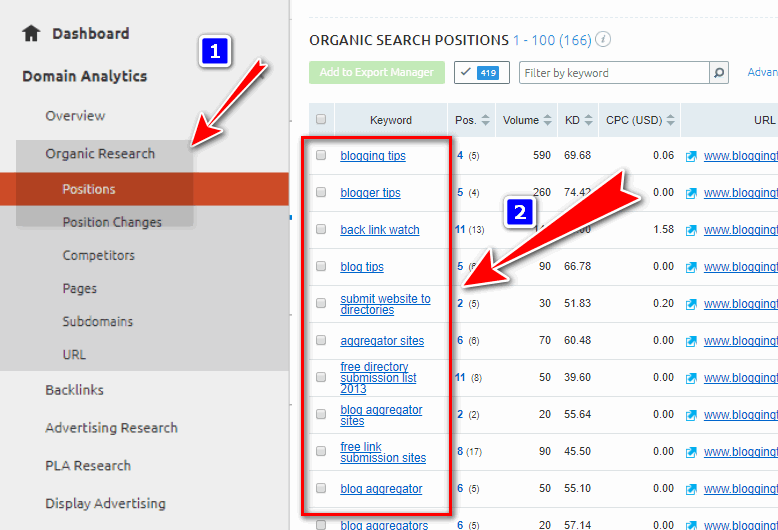
- SEMRush Free Trial for 14 days and Experience the Best SEO tool Power
- SEMRush Content Marketing Platform Review
- SEMRush Review: The trusted SEO tool Details, Features, and Prices
- SEO PowerSuite Rank Tracker Review: Best All-in-One SEO Software?
d. By Using AnswerThePublic
AnswerThePublic tool was created specifically for questions. You can use this if you plan to write good content around question keywords.
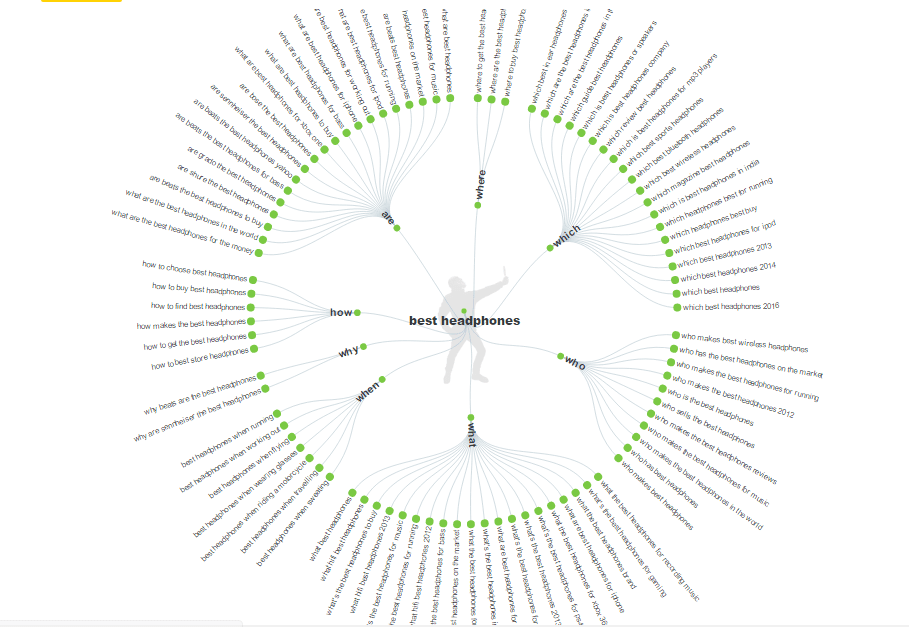
SEO copywriters are also aware of how Google views certain words and phrases, particularly long tail keywords.
It is perhaps most important to research the keywords (the search terms your audience is using) after creating quality content for your website.
The best way to achieve modern SEO success is by targeting long tail keywords, as top brands do not target them.
- Free and Premium Long tail Keywords Research Tools
- How to find long tail keywords with Google keyword planner?
- How to use KWFinder to get Awesome Keywords?
- Long Tail Pro Review: Best Keyword Research tool
After choosing the best keywords as per the search indent, store them and use them in the coming steps.
Step 3: Start writing your content

Before beginning to write content, you should create a synopsis. You can then begin writing according to your synopsis. This article needs some additional quality effort to rank on Google.
If you are creating a content brief for SEO, it is easy to assume the answer to this question is for Google.
Content briefs are effective in many ways, including SEO-focused briefs.
You can manage content quality better and save time and money with a content brief. A content brief is incomplete without a content outline.
Having quality content isn’t good enough. If your content doesn’t rank for a certain search, then it won’t rank. SEO success depends on great content.
The content should be comprehensive by covering the whole subject as per search intent. A successful content SEO strategy should also incorporate good copywriting
You should remember this checklist before finalizing the written content.
- The target keywords should be placed within the first and last paragraph of the content.
- The content should have a minimum of 1000 words. (The recommended word count is 1800) It should be long-form content that answers searcher’s queries better than short content.
- Use bullet points within the body if it is necessary.
- Add images at suitable places of the content.
In general, longer posts attract more links and social shares than short posts. Of course, You can gain a competitive advantage by writing long-form content.
The briefing process can help you reduce errors and make your content creation process more efficient.
In your headlines and throughout your content, try to use only keywords that are relevant to the topic of your post, so both your readers and search engines will know what you are talking about. Don’t overuse keywords or you risk receiving a penalty from search engines.
I personally using NeuronWriter to write new content and optimize existing content for better visibility in search engines. It is fantastic tool. You can try the NeuronWriter free version.
Making your content into small paragraphs and including headlines will make it easier for your readers to read. In addition to front-end organization, search engines use back-end organization as well.
- Best Google Chrome Extensions For Bloggers and Online Marketers
- How to Clear Browsing History on different Web Browsers?
Step 4: Optimize for Users

Blogging and content marketing face several challenges, including creating content that is both search engine-friendly and user-friendly.
Your content has to be smarter if you want to build your blog audience. A good SEO copywriting campaign can help you achieve this.
When writing SEO copy, you should use headlines that capture the attention of strangers and then get them clicking and reading further.
SEO copywriters usually start by writing the headline before writing the article or post body.
Writing useful SEO content does not mean writing a boring article that solves a particular problem.
Even if you do the best on-page SEO, if the content is not readable and not easy to understand, it will not rank on search engines.
In Google’s search algorithm for ranking #1 content in search engines, Google will begin using “User Experience Signals” in 2021 as traditional ranking signals.
If people find your content useful, it will be ranked highly.
Short sentences attract readers’ attention. Most of the time, they prefer reading short paragraphs instead of long blocks of text. Hence, you should try breaking up your paragraphs into short sentences to make them easier to read.
For a better understanding of your article, include multimedia elements like images and videos after you’ve finished writing the content.
Before hiring an SEO copywriter, you could use the Inbound Now tool to develop article ideas and blog post topics you could write about.
Step 5: Optimize Content with keywords

This step makes your content SEO-friendly.
Once you have downloaded the relevant keywords, sprinkle them throughout your content as meaningful.
It is here where you need to follow the basic on-page SEO rules to make your content SEO-friendly.
For experienced and new SEO copywriters, Yoast SEO and Rank Math SEO plugins are highly recommended to help optimize SEO copy.
What is on-page SEO? On-page SEO refers to all the things that you can do on your blog to help you rank higher, such as page titles, internal linking, Meta tags and descriptions, etc.
These are the places to optimize content for more organic traffic.
a. Title

Put the target keyword in the title of the post to make it eye-catching. It should be between 30 and 60 characters. The SEO page title is a more powerful feature. The title tag is the major heading of the article. It should be in <H1> format.
This starting word is given the highest priority by Google search engines.
- It should not exceed 60 characters
- Not more than 5 to 6 words
- Start with Keywords
b. Meta Description

Meta descriptions appear in search engine results, so you need to include the keywords. It should be between 70 and 150 characters long. It is playing a significant role in search engines. The primary goal of this description tag is to earn the searcher’s click. So try to place good keywords in the Meta description. But do not use keyword stuffing. To write good Meta descriptions, follow these points.
- Start your description with action-oriented verbs like Discover, Learn, Grab, Choose, pick, etc.
- Add more information with short and simple words. Try to give a clear idea about your post.
- Your Meta description should be under 155 characters only. Google doesn’t consider this 155, but it measures by pixels.
- Place the main keyword within this description. The search engine will be bold your keywords in the search result pages.
- Finally, end with your Meta description with call-to-action words like Getting Started, learn more, get additional information, etc.
c. Headings
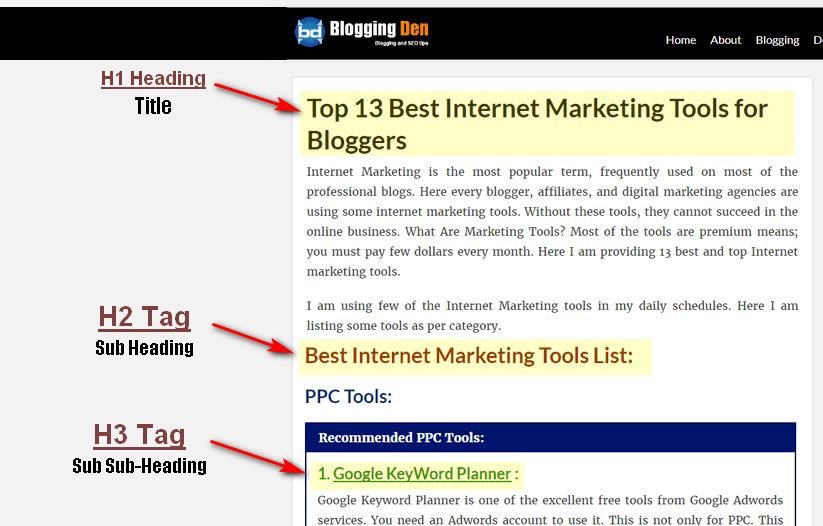
You can include the keywords within the H1 and H2 headings to make the links more visible in the SERPs.
There are 6 types of heading tags in the post-editing panel. There are H1, H2, H3, H4, H5, and H6.
- <H1>= For Post or Page title
- <H2>= For Subheading
- <H3> to <H6>= for sub-sub headings
d. Body Content
Add the relevant keywords in proper sentences without losing the sense of the content topic. The keywords should be sprinkled throughout the content in a readable manner.
e. Internal links

The interlinking of old posts with relevant keywords within the content provides excellent results. So, you need to add as many interlinks with important keywords as anchor text as you can.
f. Image optimization
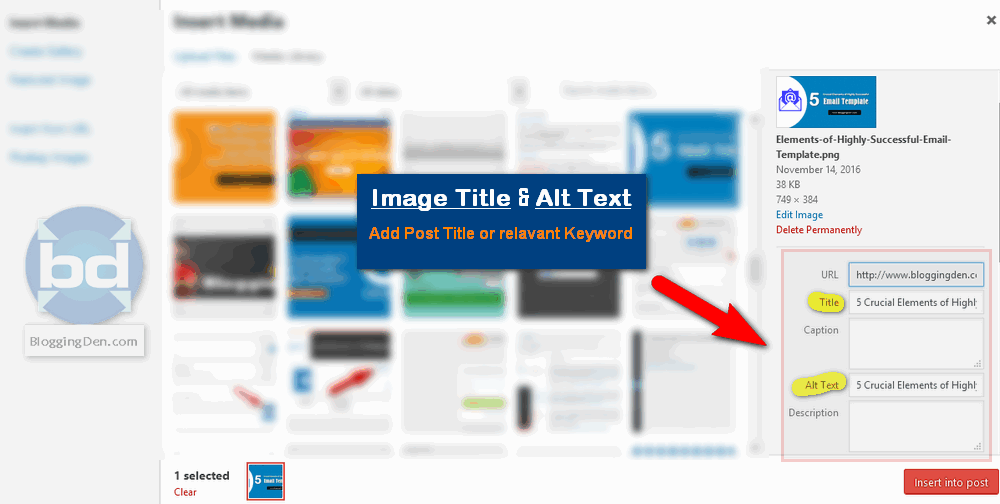
Place the images properly so that they make sense of the content. As per the optimization, save the images with keywords and upload them. Add the same keyword in the ALT TXT section.
Every post should have at least 1 image. It should be JPEG, PNG (or) Gif formats. My suggestion is to use a PNG format image.
- Before upload: Save the image with target keyword in JPEG (or) GIF. (PNG is recommended for fast loading)
- After Upload: Add the article title (or) keyword containing sentence in the “Alt” tag in the image.
This optimization helps to get the traffic from Google images also.
g. Permalink

The permalink is the page (or) post URL. With it, the target keyword must be included, and it should be simple and short. For WordPress and Blogspot blogs, the title is automatically added to the permalink structure.
The length of these URLs is over 50 characters. Remove the date and category from the permalink to shorten it. Use custom permalink settings in WordPress blog to remove date and category. This is the location of your blog post. Therefore, you need to include the keyword in the permalink.
H. VIDEOS
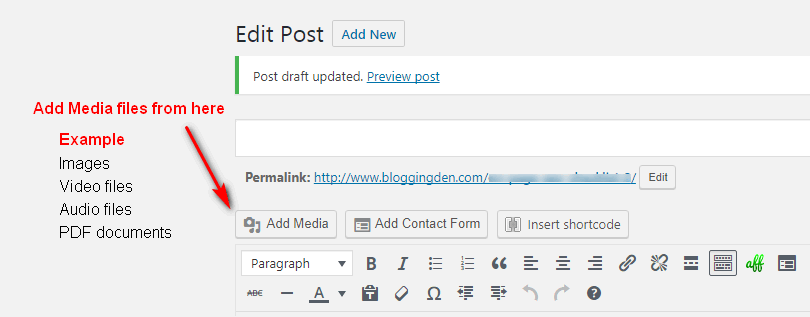
You can include/embed videos of other illustrative video content or your own video content to make the content easier to understand.
The best user experience is achieved by adding images, videos, and screenshots to your article. You can explain your concept with one smart, informative image. In the end, the user will be satisfied with your information
Your keywords should be in both the singular and plural form. On the same page, use synonyms and similar words where possible.
Typically, SEO copywriters write the headline before writing the body of an article or blog post.
If you’ve determined which keywords will work, use them in your content creation. Include them within your content, so your audience will be more likely to discover you in the search engine results.
When you follow the above on-page SEO strategy, your content becomes more SEO-friendly.
If you are using any advanced SEO toolkits like SEMrush, Website Auditor, and Surfer SEO content editor, their assistant will guide you through the best SEO practices while creating good content.
If you are new to these content optimization tools, you need to understand how to work with them to digest modern SEO concepts.
After finishing the content optimization, publish content on your blog.
Step 6: Start sharing on Social Media

Once you publish your content, it is ready to be shared on social media. Depending on the niche of your blog, you’ll have to pick the right social media platform.
For food and cooking blogs, Pinterest and Instagram are the perfect platforms.
Twitter and Facebook are excellent platforms for digital marketing content.
To promote your content on as many social networking platforms as possible. Newcomers should begin using social networking sites by creating new profiles and posting on them.
By running paid campaigns on Facebook, you can make sure that the right audiences see your posts.
- How to increase Social shares of Your Blog articles? (This is for you)
- 9 Actionable Pinterest Marketing Tips for Your Website Traffic
- Best Social Media Scheduling Tools for Bloggers and Internet Marketers
Step 7: Focus on Building BackLinks

From 2019, backlinks are considered one of the search engine ranking factors to make your content more visible on SERPs.
So, you must create a minimum of basic backlinks to your posts. You can read my backlink creation concept from my old posts if you are new to this link-building concept.
The term “backlink” may also refer to “incoming links,” “inbound links,” and “links to our site.”. Today, backlinks play a significant role in SEO. Backlinks to your blog or site indicate how popular it is and influence search engine rankings.
Links are essential to SEO content creation, but you must be careful with them.
Let us discuss a few points about the link building sources. They are.
- Social media sites: You can start posting on every social media and social bookmarking site where you have accounts to place your article link in front of your followers.
- Article directories: Write basic content that is relevant to your published content and hyperlink a new post URL with a relevant anchor keyword. Then submit article directories to get high-quality backlinks.
- Web 2.0 sites: These sites are providing free pages as subdomain format URLs. So create content around the published content topic and make hyperlink it at suitable anchor text then publish it likes anticline directory. But the difference is, you need to create a new site on a Web 2.0 site by creating a new subdomain. These are compelling resources to get high-quality backlinks free of cost.
- Social bookmarking sites: Public websites like Digg or Google Bookmarks allow users to save bookmarks (Blog URLs) to their accounts through “social bookmarking”. These bookmarks will work on any computer with an Internet connection. Other users can also view and follow your favorite bookmarks, which adds to the social aspect.
- Set up a free account at a social bookmarking site and bookmark all your pages there.
- Your bookmarks will be visible to others, and they will be able to bookmark them as well.
- Here is the list of Social bookmarking list for you.
- Blog commenting: Choose the relevant blog. Then open anyone’s blog post and write a review or query in their comment section by interacting with plenty of bloggers who did the same process before you made a comment. In that, fill in the name, email, URL, and message fields, then submit for approval. Once the admin approves it, you will get a backlink from the page. Blog commenting helps create networking.
- Discussion forums: The first step is to locate forums where you can include affiliate links or blog links in your signature files, and secondly, make sure they allow this option. Many bloggers and marketers use this method because it is not only free but also easy to use. You could start generating traffic within a few hours. Check out my 150+ Free Forum Posting Sites to get high-quality backlinks from their profiles.
- Answer sites: Websites with question-and-answer sections have high search engine rankings. You will get very high-quality backlinks if you include your blog post URL on this answer site. Yahoo Answers are one of the most powerful ways to generate traffic and high-quality backlinks.
- Free classified sites: classified advertising is another great way to drive traffic to your blog. The classified ad could be placed in a local paper or online magazine. However, those tend to be expensive, so consider placing them on free networks and directory sites instead.
- Submit infographics: Use Canva to make an infographic and then submit it to high-quality image-sharing sites like Flickr for a high-quality backlink.
- Create a video: You can create a video about the recent topic you published and upload it to any video hosting platform. Write a title and a description for your video. Put the URL of the blog post in the description section of the video, then publish it. Google’s YouTube video hosting service is the most popular. You can create a free YouTube account and start uploading videos immediately.
Building backlinks is an essential part of SEO. Search engines can easily index the sites on the list above because they are considered permanent links. Creating backlinks manually from the above sources is a good idea.
Off-page SEO covers this part. After doing this, you have to wait for few days to check the analytics.
Step 8: Check Analytics for Results

Integrating Google Analytics is another important option for new blogs. Statistics for blog posts can be found on the blog. Google offers this service for free. Have a look at my Google Analytics integration guide if you’re new to this.
- Join Google Analytics with your Gmail account and submit your blog (URL). It provides the tracking code for Google Analytics.
- You can paste the code in the header section of your blog. If you have a WordPress blog, you can use one of the Google Analytics WordPress plugins to take advantage of additional benefits, such as checking analytics right from your blog dashboard.
From that moment on, Google Analytics will begin collecting statistical data regarding your blog.
You can analyze the search performance of your search engine and how your users behave.
Depending on the post-activity and audience behavior details, you will have to wait a few days to get the exact statistics.
You should check your page’s search engine rankings, organic traffic, and impressions, as well as its keywords in these statistics.
As a Google spider crawls your website, it looks for fresh content.
Google spiders, however (update their search database with your fresh content), only pay attention to the meta tags (title tag and meta description) when they index your page.
Do not expect your brand-new piece of fresh content to rank in Google the day after it is published.
The process of ranking your content with SEO can take time. It may take 15 days to 3 months. So don’t expect miracles on the first day of publishing.
You can then write new content by switching to another topic and following these steps which are mentioned in this article.
Frequently Asked Questions (FAQs)
What is SEO content?
The content that writers create for search engines is known as SEO content. Professionals with in-depth knowledge of particular niches or subjects write SEO content. The main aim of SEO content writers is to write for search engines, not for readers. SEO content can be in any form. It can be in the form of blog content, article writing, press release writing, product descriptions, web content, or any other written format.
What is SEO content writing?
SEO content writing is writing content that is optimized for search engine rankings. It basically helps you to get more traffic from Google and other search engines. The best thing about SEO content writing is that it increases your online traffic for free. By writing SEO-friendly content, you can increase your ranking on Google from top to bottom of the page.
What is SEO content marketing?
SEO content marketing is a method of marketing that gets your audience to read and share your content. It includes writing articles and blogs and pushing your content out to your target audience. Using SEO content marketing is a great way to get more traffic, leads, and sales for your business.
What is an SEO content strategy?
SEO content strategy refers to the process of building site content with the primary goal of improving the user experience for search engine users. The content strategy aims at delivering high-quality, relevant content to the target audience. The goal of an SEO content strategy is to create content that is readable by search engine bots, accessible to site visitors, and relevant to the site’s target audience. A successful SEO content strategy requires deep knowledge of the user’s needs, the search engine’s needs, and the latest trends. Important factors that contribute to the content strategy are keyword analysis, copywriting, branding, and SEO architecture.
What is Content Analysis?
Analyzing and converting qualitative data into quantitative information is the essence of content analysis. Other forms of research collect data directly from people, whereas content analysis does not. The study of existing data in social media, books, or other physical and virtual forms is what it is.
Final words
Creating content that doesn’t give you an ROI is a complete waste of your time. Your content can work for you if you put in a little effort.
Optimization, analysis, repetition, and remembering are the basic process of SEO content writing every time. There is no end to your content.
Writing SEO-friendly content by following a proven strategy makes sense. You can rank higher if you do this. It’s important to remember that not every aspect of your plan will work out.
If you’re writing SEO content, it must align with search intent, as it will not rank well if it doesn’t match search intent.
Both white-hat and black-hat SEO practitioners saw the value of high search engine ranking and visibility.
How these techniques are performed and the practitioners who use them, have been classified as either black hat SEO or white hat SEO, respectively. Here is the list of black hat SEO methods. Do not apply these methods to your sites.
Search engines disapprove of black hat SEO because they either deceive or are disapproved by them.
Rewrite the content and add more updated information if the rankings are dropping.
This SEO content guide can help you write informative articles for your blog every time.



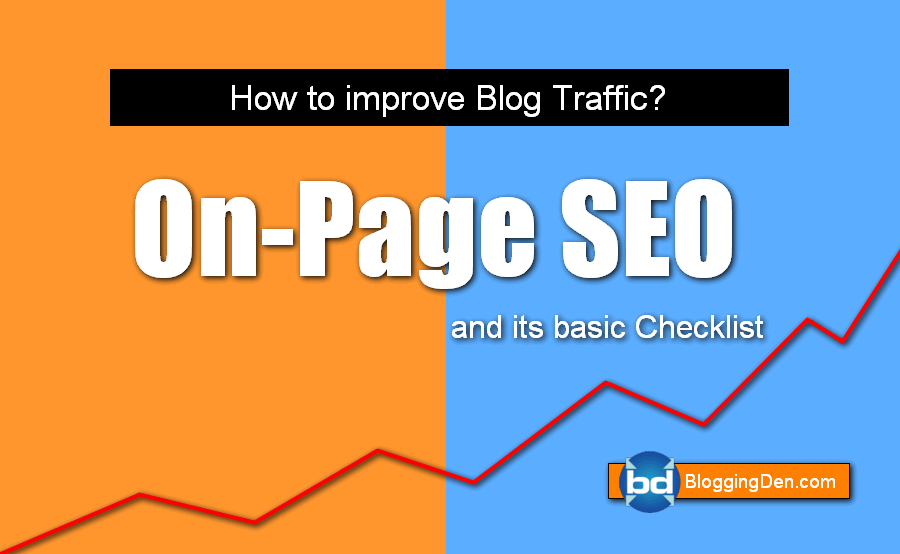

Wow, I must say you did a huge ton of writing on SEO here.
No doubt, no professional blogger can survive today without SEO, thanks for the post.
Hey Satish,
This post was a hell of a lot of big and detailed posts. I love your writing style. Thanks for this valuable guide, sir.
Creating detailed content has helped me get my blog post ranked on Google without any backlinks.
Cheers,
Nishant
Having the right content helps in pushing the brands to a new level, especially embedded with affiliate marketing. Creating content is one of the best tools to market products and brands.
Hey Satish,
We should always try focus on publishing compelling, quality content that is uniquely different and more valuable than anything else out there. That usually means it’s long-form content.
Proper research of keywords is absolutely necessary while going to develop a effective content. Eventually, thanks for revealing a light on this topic.
With best wishes,
Amar kumar